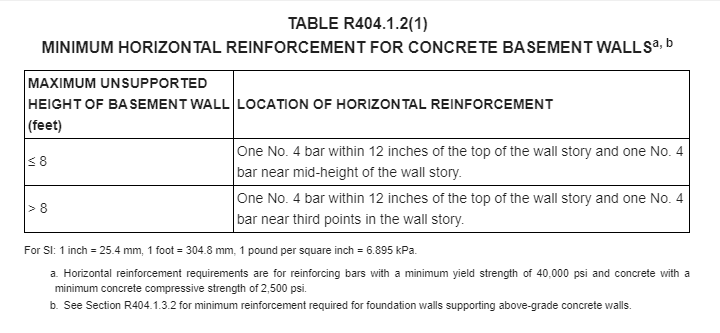BSE05
Structural
- Sep 16, 2005
- 127
Table R4041.2(1) is new to code and requires one #4 bar top and middle of 8 ft high concrete basement walls.
I am reviewing a homeowners claim against the builder that this was not done for his new home construction. Does anyone have a theory on what this reinforcing does for the wall? It is not enough area of reinforcing to offset concrete shrinkage.
Thanks for any input.
I am reviewing a homeowners claim against the builder that this was not done for his new home construction. Does anyone have a theory on what this reinforcing does for the wall? It is not enough area of reinforcing to offset concrete shrinkage.
Thanks for any input.




